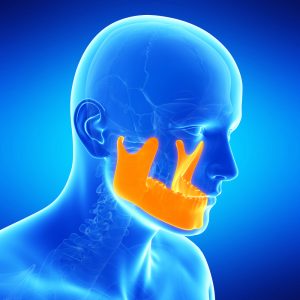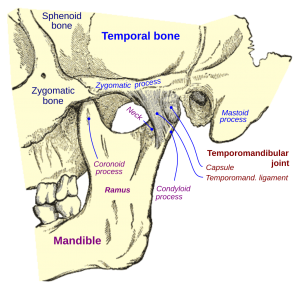PRECISE CROWN & BRIDGE & IMPLANTS should never be placed in DESTRUCTIVE GRINDER until the destructive force has been lower to non destructive level.
Destructive Grinding: Why would you put precise, gorgeous, well designed, occlusal perfect crowns & implants in front of such a destructive force. That's TITANTIC THINKING ? 1) Place a beautiful sculpture in front of transfer truck and see what happens 2) Explain to patient why is 50,000 dollar mouth still hurts 3) After patient invested 30,000 in implants 5 years ago, you bravely tell them need redone 4) Keep rebuilding them at your expense, until run out tooth structure 5) Change practices often enough so your failures can find you 6) Buy premier practice that sells most crowns-implants, and now you have tell them they are failing
TMD INSTABILITY: When Prosthodontist needs Orofacial Pain & chewing system orthopedics 1) Complete displaced disc 2) Osteoarthritis 3) Dual bites 4) Destructive grind-clench
DESTRUCTIVE GRINDING-CLENCHING CAN & WILL DESTROY YOUR BEST IMPLANT OR CROWN/BRIDGE
LOSS SPACE IN TMD JOINT CAN DESTROY THE BEST DESIGN OCCLUSAL SCHEME
CAUTION DENTIST RECONSTRUCTION: You have taken extensive weekend courses on implants or occlusion. You think you are best thing since sliced bread. Don't let your ego write a check you cannot cash. A well known professor told me years ago, I can teach you how to do crowns and implants in weekend, but it will take me 3 years to teach the exceptions. One of these exceptions is the powerful destructive force of destructive grinding-clenching. The second is TMD instability.
Let me tell you story on myself, in case you think you know my heart. I am trying to educate you to horrors of "EGO DENTISTRY" before you hurt a patient: THE STORY: In my first year at University Florida of a 3 year residency, I was watching Dr. Parker Mahan deliver an orthotic on complex bite in painful TMD case. He spent one hour on the delivery of the well designed hard acrylic orthotic made in his excellent lab technician. After patient left, I asked Dr. Mahan if we had to do all that to manage pain. He looked at me and smile with that grandfather- Christian-great teacher like smile and said, "YES, and then some" ! I went home that night and told my wife that even after the hundreds of hours at weekend courses on appliances (Pankey, Dawson, others), I did not know much about appliances. I went to study under the "master of orthotics"-Dr. Mahan -thinking there is not much he can teach me on appliances because I had taken them all. In my humility or maturity, I am telling you that any subject of study like TMD, appliances, implants, root canals, etc is more complicated than our ego reveals. My parting wisdom, "EGO" is only disease that makes everyone else sick ?
Explaining how, TMD CAUSES BITE CHANGES ? 1) How TMD changes bite: a) Loss disc TMD b) Bone loss in TMD 2) Chewing system is like 3 legged stool, change one legs destroys stability 3) Change the TMD leg by bone loss or disc loss and you destroy stability 4) An investment of 30 to 40 thousand deserves predicatalibity of stable TMD 5) A history of restricted opening makes reconstruction bite unpredictable 6) Test TMD stability before the patient invest thousands dollars 7) Refer for TMD stability on any patient with hints of instability 8) TMD stability is tested & managed by OROFACIAL PAIN SPECIALIST 9) JOIN TEAM, as specialist, the chewing system orthopedic team
INSTABILITY TMD: A gifted prosthodontist studies TMD instability; so as, diagnosis instability and request a OROFACIAL PAIN SPECIALIST to re-establish TMD STABILITY. You cannot get a accurate on TMD instability, no one can. Recommend chewing system orthopedic team to provided TMD STABILITY BEFORE RECONSTRUCTION.
DUAL BITES: A seasoned prosthodontist can sense multiple bites, dual bites, CR=/= CO: 1) Statistics: a) No dual bite =85%, b) Slightly different = 10 %, c) Significant difference = 5% 2) Pankey/Dawson speak CR=/=CO, when speaking to patient use "Dual Bites" 3) Dual bites: Jaw joint bite verse tooth bite 4) Teeth control muscles to bite to protect the teeth (best occlusal interdigitation) 5) Jaw joint controls muscles to place TMD ideal spot so muscles do not have to brace condyle 6) When jaw joint not same tooth bite certain teeth are in way 7) This muscle bracing adds to chewing muscles activity (grind, tension, trauma, pain)
Discovery dual bites is possible through the implementation of chewing system orthopedics.
DIFFICULT DUAL BITES: How to discover majority of dual bites: In implementing chewing system orthopedic team, we relax the Lateral Pterygoid enough to allow the jaw joint to achieve it's fully seated position. We accomplish this miracle only through the best orthopedic team with best skills & empathy with a passionate patient. For some really anxious patients, they cannot relax enough to achieve CR or jaw joint bite. They cannot give up their life in anxiety because it is all they know and the fear unknown keeps them locked behind the jail of anxiety. How else could you get the Lateral Pterygoid to relax /
The art of reconstruction lies in ability to achieve harmony in chewing system:
- Consistent & repeatable bite,
- Reduce destructive force grind-clench
- Harmony with muscles and joint function,
- Proper Architecture-geometry-physiology
- Beautiful art of color, design, contours
- Harmony bone support
- Stable TMD
Reconstruction:
- Treats damaged tooth structure, not cause DESTRUCTIVE GRINDING
- Unstable TMD'S destroys accuracy bite
- Destructive parafunction destroys everything
- Destructive grinding changes bite progressively
Repeatable bite:
- When jaw joint is unstable, the bite cannot be perfected
- Occlusal stability lies in getting the same bite repeatedly
- Joint instablity means “moderate to severe jaw joint damage”
- Jaw joint stability must be established before reconstruction
- If jaw joint is stable, reconstruction can begin
- Instibility means guessing where mountains (cusps) & valleys (fossas) go
Chewing system Stability is difficult to determine w/o Orofacial Pain Examination:
- Joint Instability: a) Disc displacement b) Osteoarthritis
- Muscle stability: a) High anxiety-Emotional Hyjacking b) Childhood abuse or horrific accidents-PTSD
- Mechanical Instability: a) Hypermobility b) Dual bite c) Loss space TMD
- Destructive grinder: a) Frequency b) Duration c) Power
Prosthodontist and dentist think they can restore "any" mouth. The new indestructible porcelain ignores the fact that destructive grinding can destroy everything (metal, porcelain, appliances, retainers, brackets) & (muscle, joint, teeth, bone support). As we know with car, something has to wear out. If we build indestructible porcelain, the massive force of grinding will destroy the other structures of chewing system (bone support, muscle, or joint).
Why are some reconstructions not successful?
- Dual bites
- Hypermobility
- Muscle instability
- Trauma’s Jaw
- Disc displacements
- Osteoarthritis
- Joint instability
- High Anxiety
- Destructive parafunction
- Poor Healing ability w/ jaw trauma
ANXIETY-EMOTIONAL HYJACKING-PTSD:
- Anxiety is at high levels or severe spikes of anxiety
- High anxiety creates muscle recruitment (tension)
- Tension in muscles adds to grind-posture-bracing-habits
- Excessive Muscle contraction tears lateral ligament TMD
- Highly contracted Superior Lateral Pterygoid makes it difficult achieve correct bite
- High anxiety creates this power muscle contraction
- We want to be accurate, but our LP muscle defies that need
- Anxiety makes it difficult to complete reconstruction successfully
Emotional stability (these are descriptors not lables)
- High anxiety-worry-fret-perfectionist
- Spikes of fear
- Moderate anxiety continuously
- Unmedicated or undiagnosed bipolar
- PTSD’s, Emotional Hyjacking, Panic attack
ERRORS in our thinking about Destructive grinder ?
- Only 2 catagories grinders: a) Grinder b) Not a grinder
- All 3 Levels grinding are manage same: a) Mild b) Moderate c) Destructive
- Grinding is movement disorder not bad habit
- Destroys more than just teeth a) Joint b) Muscle c) Bone support
- Todays dentistry treats destructive grinding after reconstruction
- Hidden & Destructive in 5-15% population
- Reconstruction treats symptom (wear-breakage) not cause damage
- If 1st reconstruction fails, "that must be a lousy dentist", not "he miss diagnosis"
- Wasted patient investment, frustrated patient who loves teeth, creating distrust dentistry
- Don't you see hypocrisy in our thinking, prosthodontist have missed the diagnose on patients
Protect Patient's Investment: When you reconstruct a case with your precision products, should you not protect these investments from destructive forces that can even destroy God’s material "enamel". With destructive grinding, you need to start protection before reconstruction by lowering power-frequency-duration of this destructive power. For professionals like me who are slow, this means referring DESTRUCTIVE GRINDER to CHEWING SYSTEM ORTHOPEDIC TEAM before reconstruction. Even referring after reconstruction is better than letting this hidden destructive force to destroy your great work.
Mechanical Instability
- Success reconstruction:
- Jaw joint stability
- Destructive parafunction managed
- Names for bite instability
- Dual bites
- Multiple bites
- CR=/=CO
- Jaw joint bite =/= tooth bite
- Why mechanical instability
- Multiple reconstructions
- Hypermobile joint
- Multiple equilibrations
- High Anxiety-Emotional Hyjacking
- Loose & floppy disc
- Reposition joint by ARS-LVI-Olmos
- Occlusal neurotic-OCD
- Violation airway
Hypermobile joint
- Open locks is name we give Jaw joints when hypermobile
- Erlos Danlos is hypermobility in many joints body
- Breighton score can be use to screen for TMD hypermobility
- How do you get precise jaw joint bite w/ loose floppy TMD ?
- Repeated Open lock causes tearing lateral ligament TMD & eventually displaced disc
- Forced closure due panic causes increase tearing lateral ligament.
- Open lock tearing adds to other tearing of ligament: grind-trauma-posture-tension-dual bites
Jaw joint instability:
- Sudden Displace disc
- Osteoarthritis
- Rheumatoid arthritis
Love pioneers determination for accuracy, insight, courage, foresight (Pankey, Dawson, Mahan, Gremillion, Tanaka, Travell) (please forgive me if I left anyone out)
Imperfections in chewing system should be managed or treated before reconstruction to achieve the greatest accuracy-success-longevity-dependability
OCCLUSION or BITE STABILITY
Occlusion:
- how cusps and fossa fit & work together
- how mountains & valleys are positioned
- dual bite diagnosis
Guidelines for Occlusionist-Prosthodontis:
- Refer Orofacial Pain Specialist for
- Destructive parafunction
- Jaw joint Instability
- Emotional Stability
- Study complexity occlusion
- Understand geometry of mouth
- Controlled Perfectionist
- Diagnose jaw joint instability
- Understand dual bite
- Diagnose destructive parafunction
Important Questions for Prosthodontist-Occlusionist:
- Can I “Fix” all cases ?
- Why my great skills could not overcome all obstacles?
- What are obstacles to success?
- When do I need recruit orofacial pain specialist?
- Am I referring or joining the Chewing system orthopedic team ?
- Why occlusal therapies removed some symptoms but not others ?
Guidelines for Prosthodontist:
- Do I run my practice based on my ego or empathy?
- Can I fix a bad bite with jaw joint instability
- Can I fix a bad bite in presence of destructive parafunction
- Can I fix a bad bite with emotional instability



